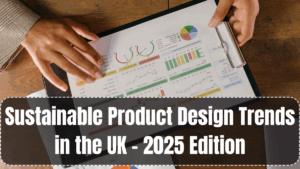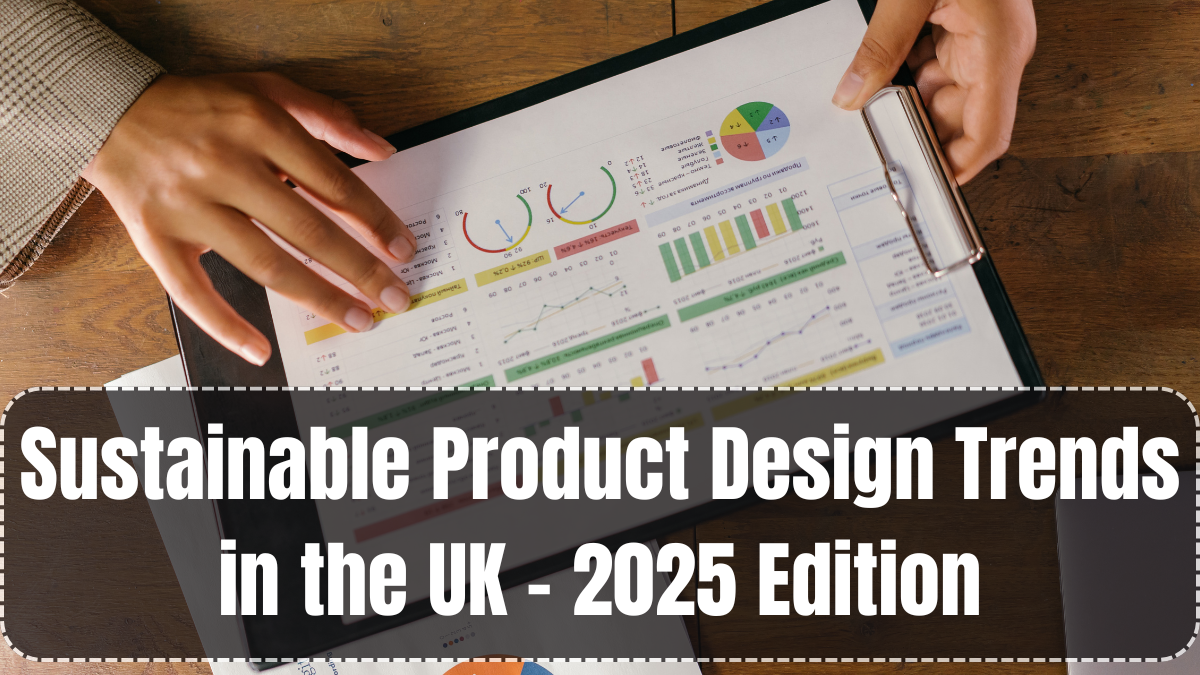As climate consciousness grows across industries, sustainable product design has taken centre stage in the UK. In 2025, eco-friendly innovations are no longer optional—they’re a necessity. Consumers now expect products to be both functional and planet-friendly, and designers are rising to the challenge with new techniques, biodegradable materials, and circular economy models. Whether it’s packaging, fashion, furniture, or tech accessories, sustainability is deeply embedded in design thinking across the UK.

What is Sustainable Product Design?
Sustainable product design is the process of creating products that minimize environmental impact throughout their lifecycle. This includes:
-
Using renewable or recycled materials
-
Reducing energy and resource consumption during production
-
Designing for longevity and reuse
-
Planning for end-of-life recyclability or biodegradability
-
Ensuring ethical and responsible sourcing
This approach supports the UK’s commitment to net-zero emissions and aligns with global sustainability goals.
Key Trends in Sustainable Product Design (2025)
In 2025, sustainable product design in the UK is influenced by consumer awareness, government regulations, and corporate responsibility. Major trends include:
-
Biodegradable Packaging: Popular among FMCG brands, these reduce landfill waste.
-
Recycled Plastics in Products: Electronics and furniture industries are using ocean and post-consumer plastics.
-
Modular Designs: Products with replaceable parts to extend their lifespan.
-
Minimalist Design Aesthetics: Less material used, more durability.
-
3D Printing with Eco-Materials: Reduces waste and allows custom eco-friendly builds.
These trends are visible across fashion, tech, household, and even the toy industry in the UK.
Popular Sustainable Materials in the UK Market
UK designers are increasingly incorporating innovative green materials into their creations:
| Material Type | Description | Common Use Cases |
|---|---|---|
| Mycelium Leather | Fungal root-based leather alternative | Footwear, accessories |
| Bamboo Composites | Fast-growing, renewable bamboo-based mix | Kitchenware, interiors |
| Recycled PET | Plastic waste transformed into fabrics | Clothing, upholstery |
| Hemp Fabric | Durable and low-water natural fiber | Apparel, packaging |
| Cork | Renewable and biodegradable bark material | Furniture, fashion items |
Each of these materials reduces the environmental footprint while offering design flexibility.
Role of UK Government & Policies
The UK government is actively pushing the agenda for sustainable product design through:
-
Extended Producer Responsibility (EPR): Shifts recycling costs to producers
-
Plastic Packaging Tax (PPT): Taxing packaging with less than 30% recycled content
-
Eco Design Regulations: Targeting energy efficiency and reparability in electronics
-
Funding for Green Startups: Innovation grants for sustainable product developers
These initiatives are shaping how companies source materials, design products, and manage post-sale responsibilities.
Companies Leading the Way in Sustainable Design
Several UK-based companies are setting benchmarks in sustainable product design:
-
IKEA UK: Designing flat-packed, recyclable, and modular furniture
-
Toast: Using eco-conscious fabrics and slow fashion principles
-
Notpla: Developing seaweed-based packaging that biodegrades naturally
-
Pangaia: Apparel made from recycled materials and plant fibers
-
Lush Cosmetics: Zero-waste packaging and refill programs
These brands are not only reducing environmental impact but also gaining trust among eco-conscious consumers.
How Designers Can Integrate Sustainability Today
For designers looking to implement sustainable product design in their own work, here are some actionable steps:
-
Start with lifecycle analysis before choosing materials
-
Use eco-friendly CAD tools that simulate environmental impacts
-
Partner with green manufacturers for responsible sourcing
-
Educate clients on long-term cost savings of sustainable products
-
Design for disassembly so products can be repaired or recycled
Sustainable design isn’t just about materials—it’s a mindset that influences the entire product journey.
FAQs
What is the core goal of sustainable product design?
To create products that reduce environmental harm across their lifecycle—from sourcing to disposal—without compromising functionality.
Which industries in the UK are adopting sustainable design fastest?
Fashion, packaging, electronics, and home décor are leading in sustainable practices.
Are sustainable materials more expensive than traditional ones?
Initially, some materials may cost more, but they often offer long-term savings through durability and brand value.
How do I find suppliers of sustainable materials in the UK?
Platforms like The Sustainable Angle, Ecovative, and UK Green Building Council offer directories and sourcing support.
Can small businesses adopt sustainable product design affordably?
Yes, by starting small—like switching to recycled packaging or designing modular products—businesses can transition gradually without major upfront investment.
Click here to know more.
